The fascinating story of the Statue of Liberty
An American icon
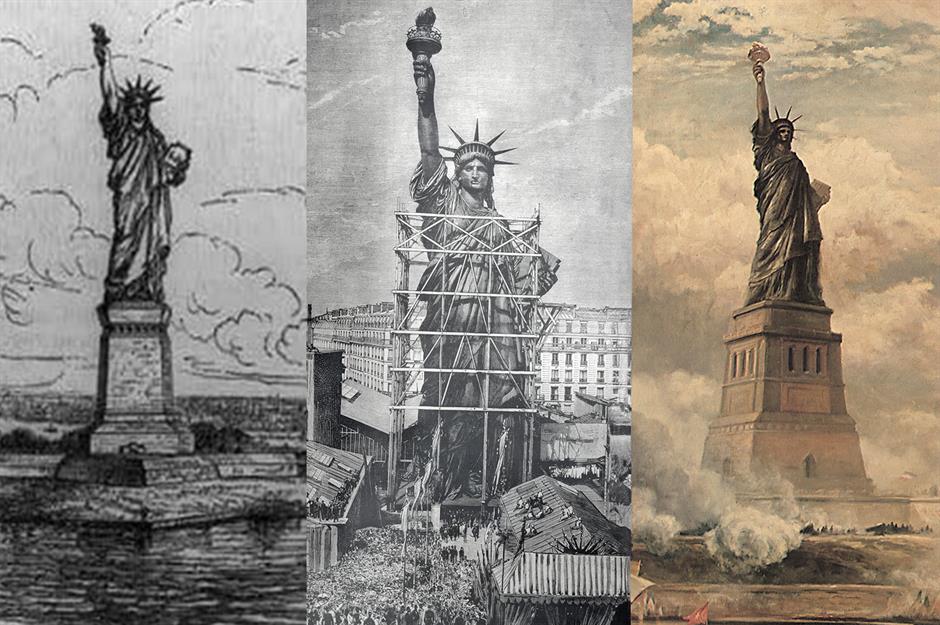
The Statue of Liberty is one of the most recognizable monuments in the world. Since her 19th-century unveiling, she's graced cinema screens, been at the center of national celebrations, and drawn visitors from all over the globe. But how well do you know her story?
Click through this gallery to discover the incredible tale of Lady Liberty...
It all began with the 'Father of the Statue of Liberty'
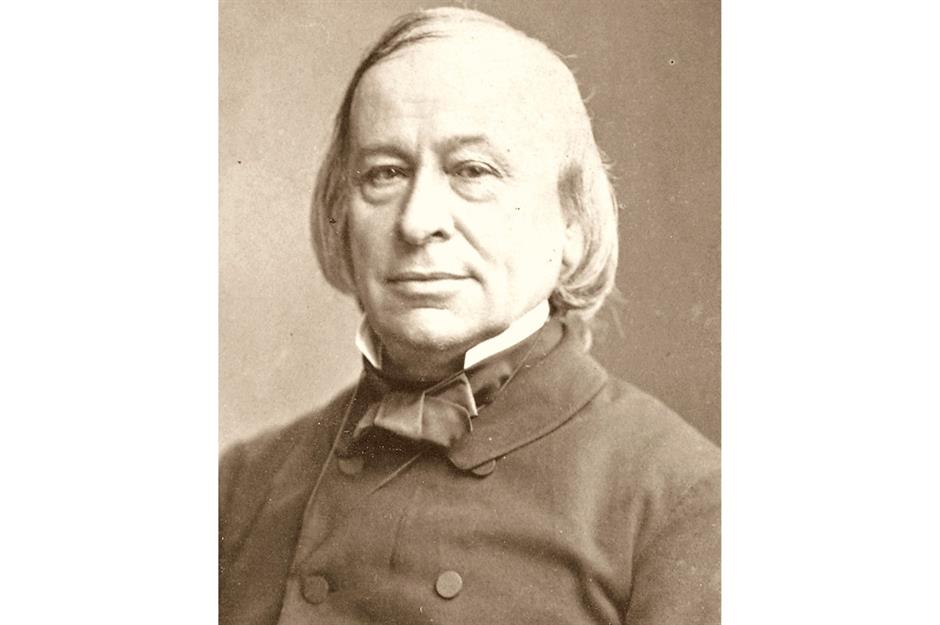
The idea for the monument came from Édouard de Laboulaye (pictured), now known as the 'Father of the Statue of Liberty.' A passionate abolitionist and supporter of President Abraham Lincoln, Laboulaye proposed that France gift a monument to the US after the Civil War. He believed the Union’s victory had affirmed the shared values of liberty and democracy – ideals the statue would go on to symbolize.
A young and promising sculptor is chosen

Enlisted to design the statue was sculptor Auguste Bartholdi. At the time, Bartholdi was still an emerging artist but, trusted by Laboulaye and enthusiastic about his vision, he dived headfirst into the project. He set up meetings with American dignitaries, who gave the young sculptor a lukewarm response to the idea.
An early design of the Statue of Liberty
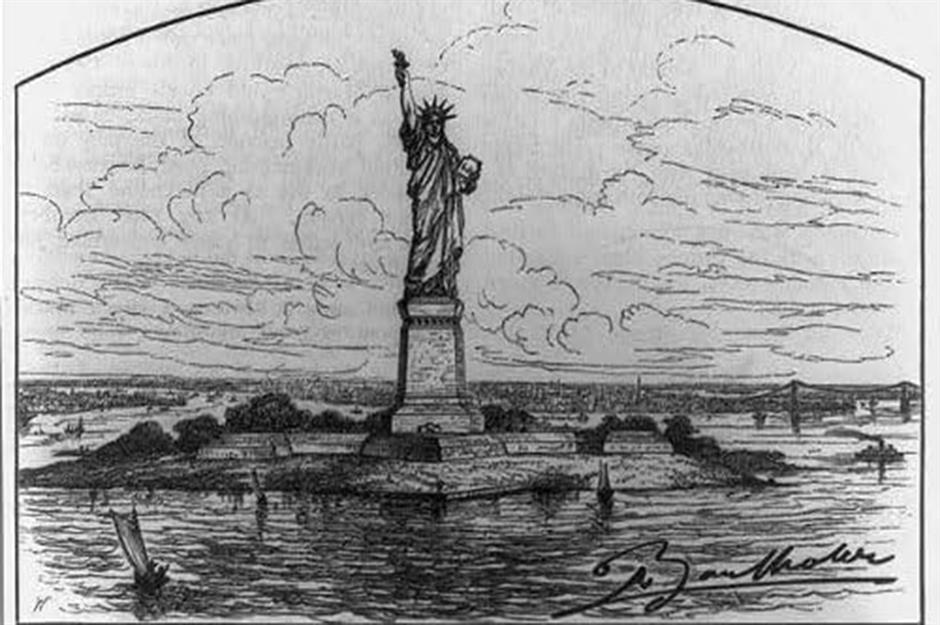
This early sketch of Bartholdi’s Liberty Enlightening the World is rich in symbolism. It features broken shackles at Lady Liberty’s feet, a crown with seven spikes for the sun, continents, and seas, and a tablet inscribed with July 4, 1776, in Roman numerals to mark the Declaration of Independence.
Love this? Follow us on Facebook for more travel facts and inspiration
Labouye and Bartholdi lobby for support

Though the pair's vision was strong, Laboulaye and Bartholdi initially lacked funds and support. They implemented various fundraising strategies, from lotteries and theater events to public donations.
Editor and politician Joseph Pulitzer (pictured) was an early advocate – he urged the public to donate in the pages of his influential newspaper, New York World, triggering some $100,000 in contributions.
A location for the statue is scouted
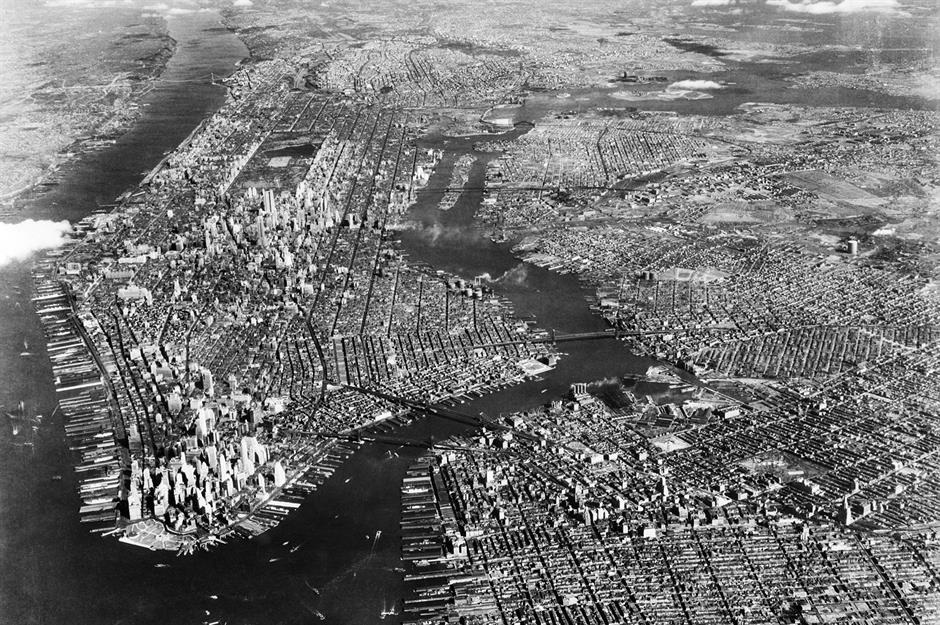
The French were responsible for funding the statue itself, while Americans were tasked with raising money for its pedestal. In 1871, Bartholdi traveled to the United States to scout a location for the monument.
He quickly set his sights on New York City’s Bedloe’s Island, a small but strategically positioned isle where any ship entering the busy New York Harbor would be greeted by the statue. This 1930s photograph captures an aerial view of the harbor.
Work on the Statue of Liberty begins
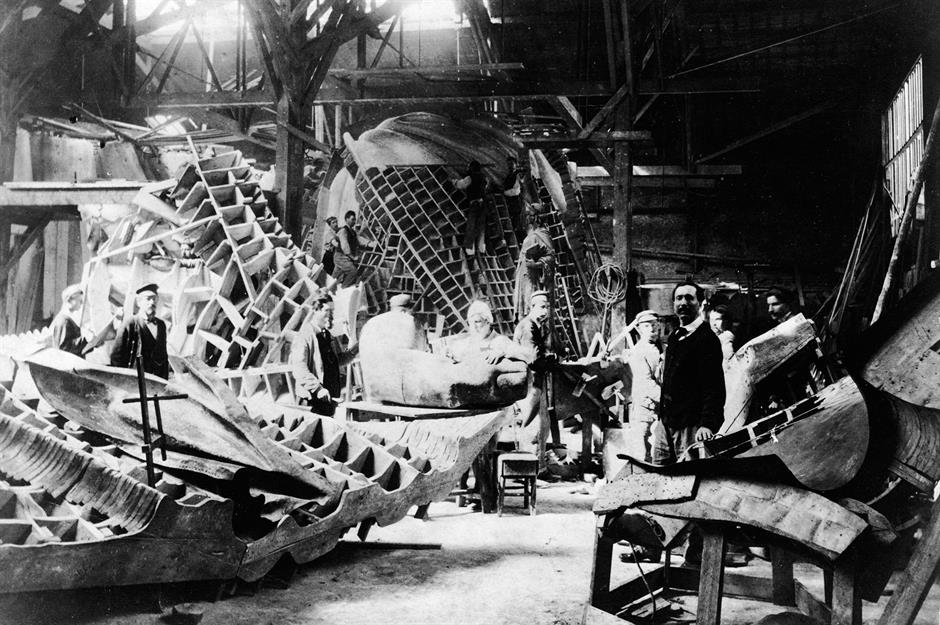
Finally, enough funds were raised and work began on what would become an American icon in 1876. Bartholdi directed a team of world-class French craftspeople and sought counsel on the landmark’s structure from lauded French engineer Gustave Eiffel, who would go on to build the Eiffel Tower. Eiffel designed a mammoth iron framework, which would form a rock-solid skeleton for Lady Liberty.
A giant begins to emerge

As building got underway, interest in the monument increased. This photo shows Bartholdi explaining the structure of Lady Liberty’s giant hand, under construction, to a curious visitor. Upon completion, the hand would be a giant 16 feet, while the length of her right arm would be just under 43 feet.
Lady Liberty's hand is displayed in Philadelphia
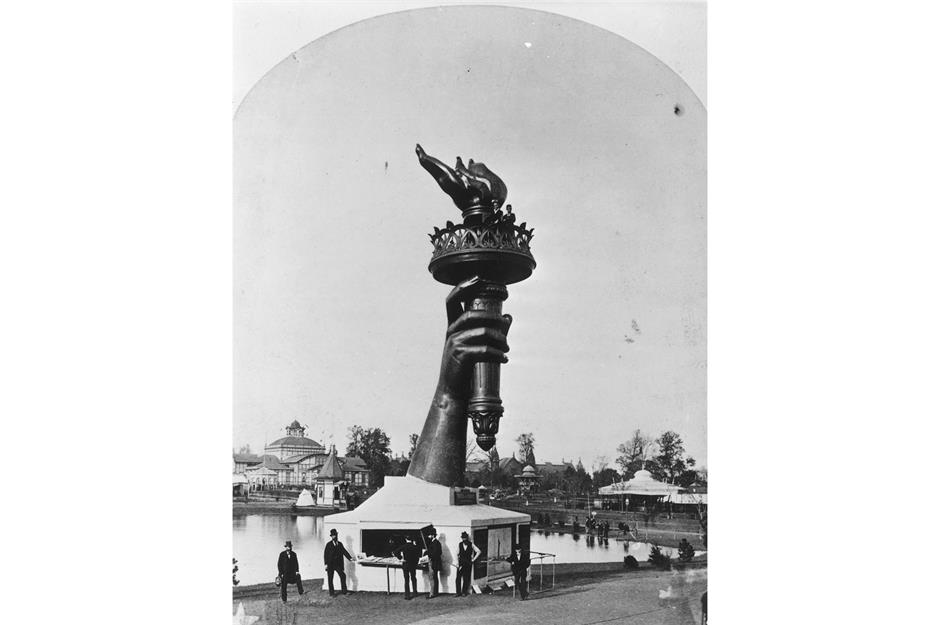
Gradually, parts of the statue began to take shape. Lady Liberty’s torch-bearing hand was unveiled at the 1876 Philadelphia International Exposition. The torch alone measures over 16 feet tall and 12 feet wide, and in strong winds, the massive beacon can sway by as much as six inches.
Then, her head is unveiled in Paris
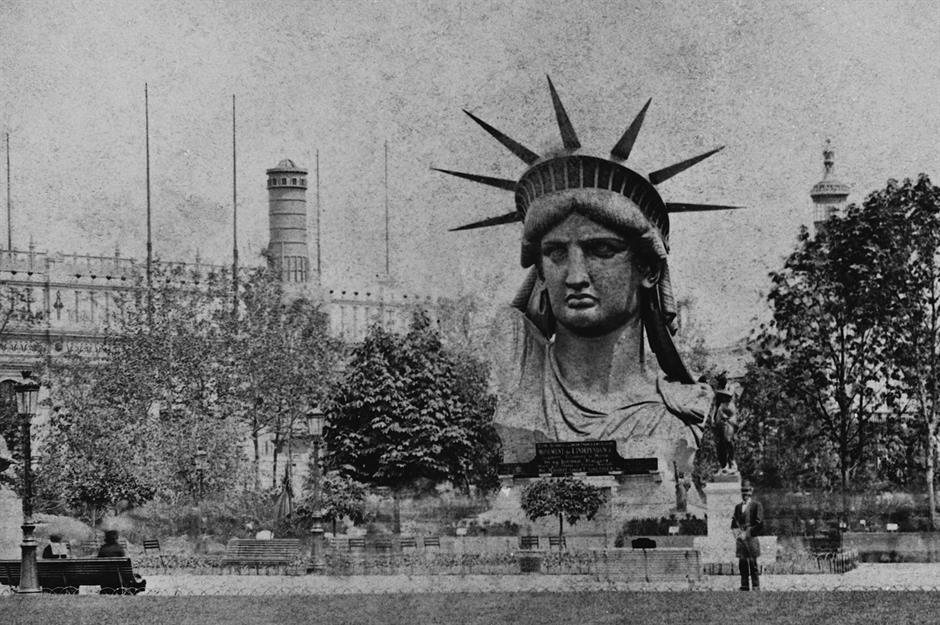
Perhaps most striking was Lady Liberty’s enormous head, built and displayed at the 1878 Paris International Exposition (Exposition Universelle). Pictured here on the sprawling Champ de Mars, it drew crowds of visitors who marveled at the spectacle from nearby park benches.
The statue nears completion

By 1883, major parts of the statue, including the head, had been completed and were stored at Bartholdi’s Paris workshop. Here, Lady Liberty’s head awaits the final assembly of the full monument, which was completed in 1884 before being dismantled for shipment to the United States.
The pedestal is constructed

In 1884, across the pond, work began on the Statue of Liberty’s mighty granite pedestal on Bedloe’s Island. From the ground to the pedestal, the height is a whopping 154 feet. This photo from the period shows a large team hard at work on the construction.
The Statue of Liberty is on the move
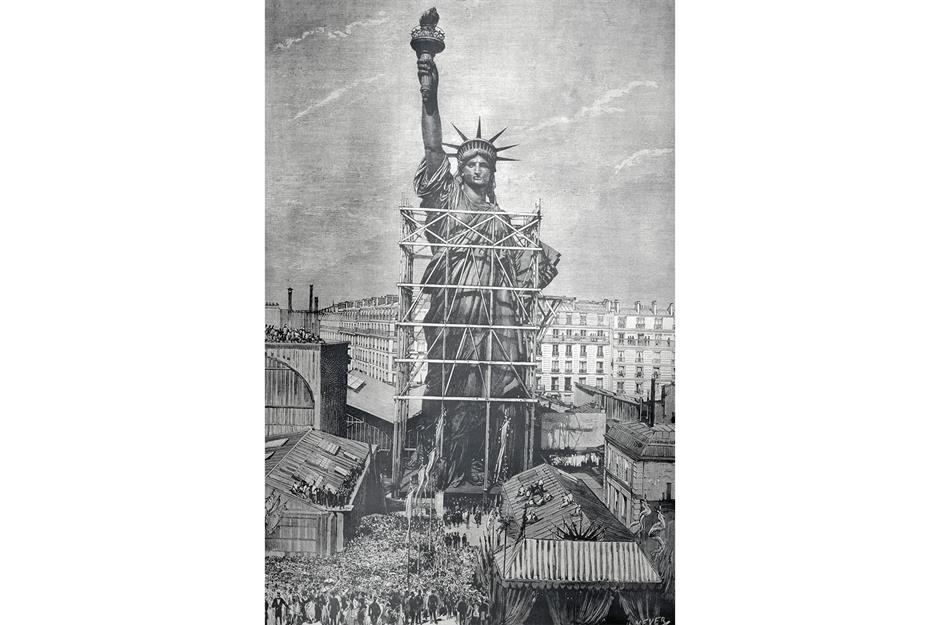
Finally, it was time to ship the colossal statue from Paris to the United States. Packaging the monument was a mammoth task: the assembled statue was broken down into 350 pieces and then loaded into 214 individual crates.
Lady Liberty arrives in New York
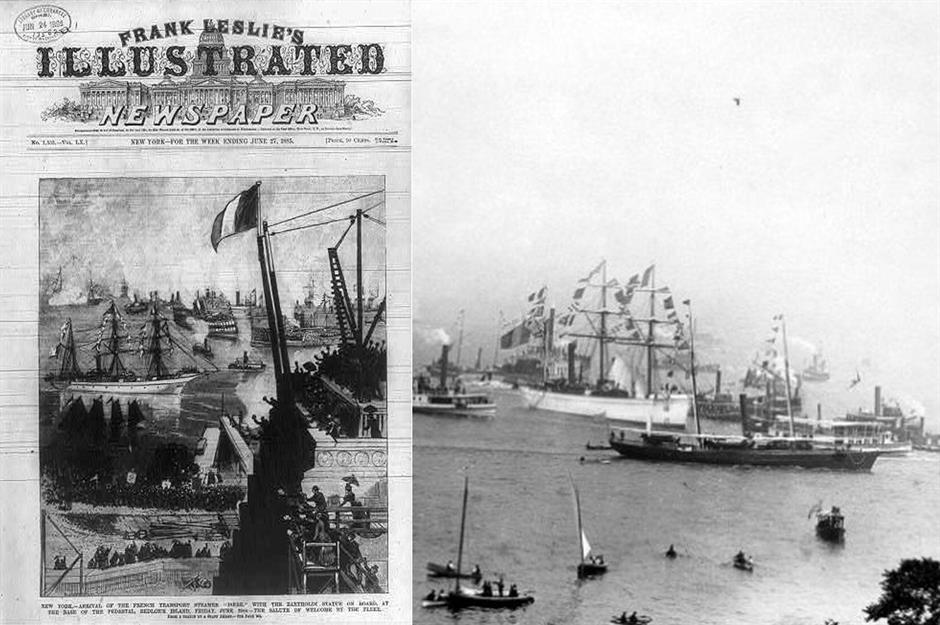
This photo captures the arrival of Lady Liberty in New York Harbor. Hundreds of crates containing her head, body, and torch were transported across the Atlantic aboard the French steamer Isère. Once in the harbor, the crates were transferred to smaller barges for the final journey to Bedloe’s Island.
There's a hold-up with construction

However, though Lady Liberty's arrival in the Big Apple was hotly anticipated, the city wasn't altogether ready for her when she pulled in, in June 1885.
Unfortunately, despite workers' hard labor, the pedestal was yet to be fully completed. Construction would finally be finished in 1886, so assembly of the statue could begin (pictured).
Construction is in full swing
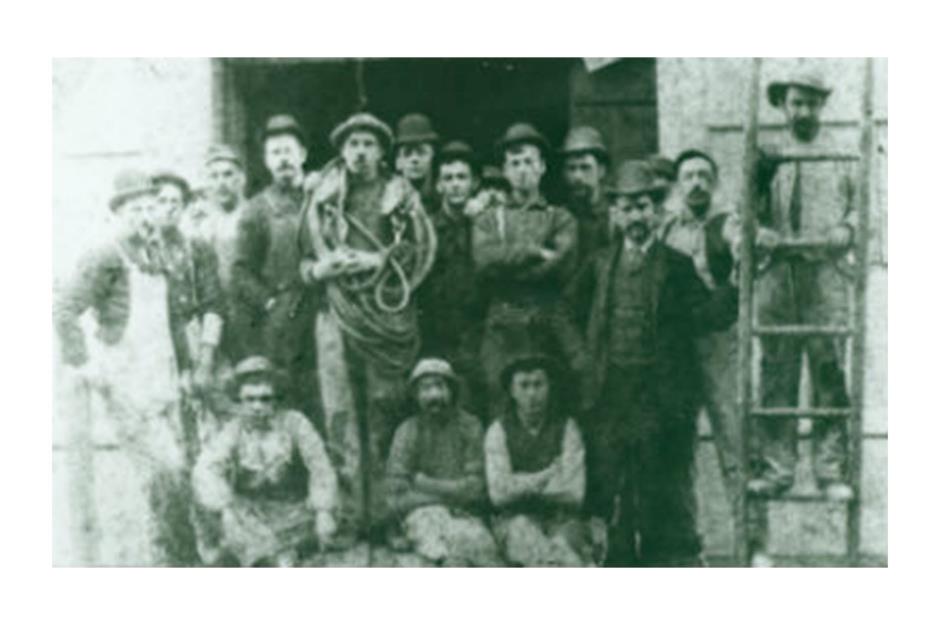
The very first thing to be done was erect Lady Liberty's gargantuan iron framework. Then a hard-working labor force (pictured), composed mostly of new immigrants, hauled the rest of her body parts into place using steam-driven cranes.
The Statue of Liberty is unveiled
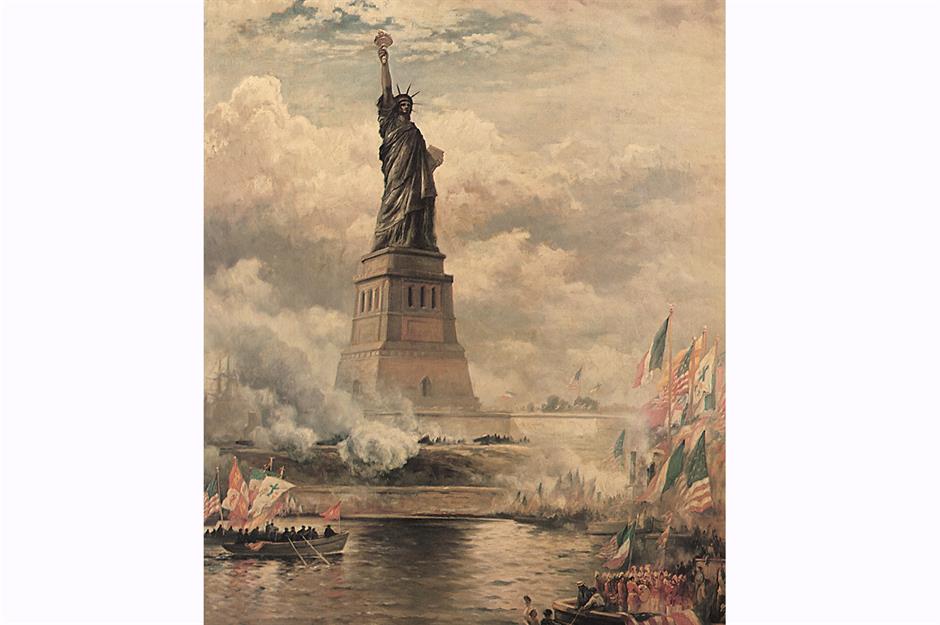
Lady Liberty is a dramatic lighthouse

Did you know that Lady Liberty technically started her life as a lighthouse? Because of the light in her torch, she was placed under the care of the US Lighthouse Board by President Grover Cleveland.
However, serving as a lighthouse was never her intended purpose, and she proved an ineffective beacon – the light was too dim and unfocused to safely guide ships into New York Harbor.
The statue welcomes newcomers to the US
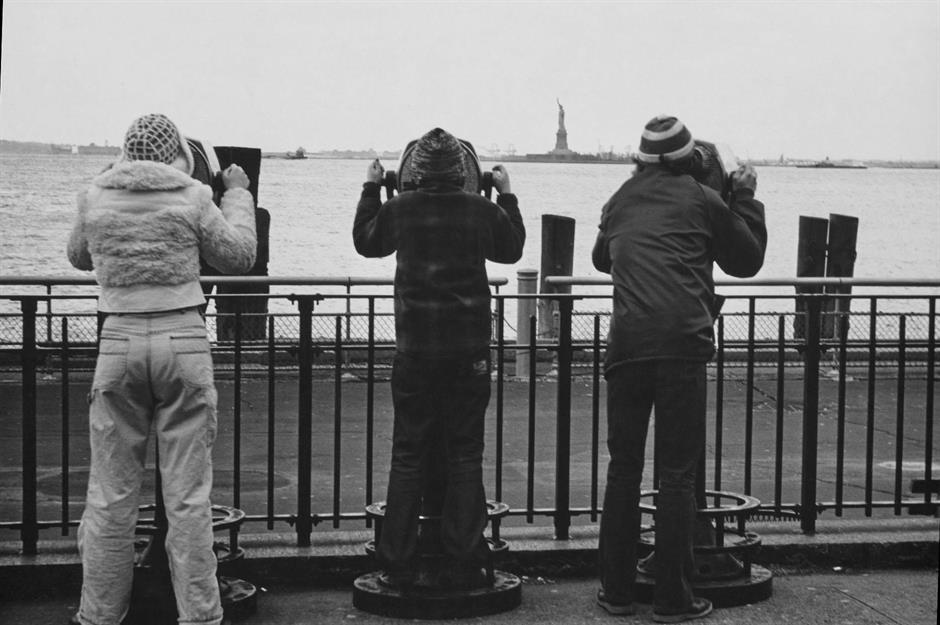
Over time, the mighty statue became a symbol of immigration. Millions of immigrants poured into the United States in the late 1800s, and for those coming into New York City, the mammoth monument would be their first welcome.
It's estimated that some 14 million immigrants entered America between 1886 and 1924, and from 1892 they were processed on Ellis Island, in the wake of the great statue.
The Statue of Liberty becomes a National Park Service site
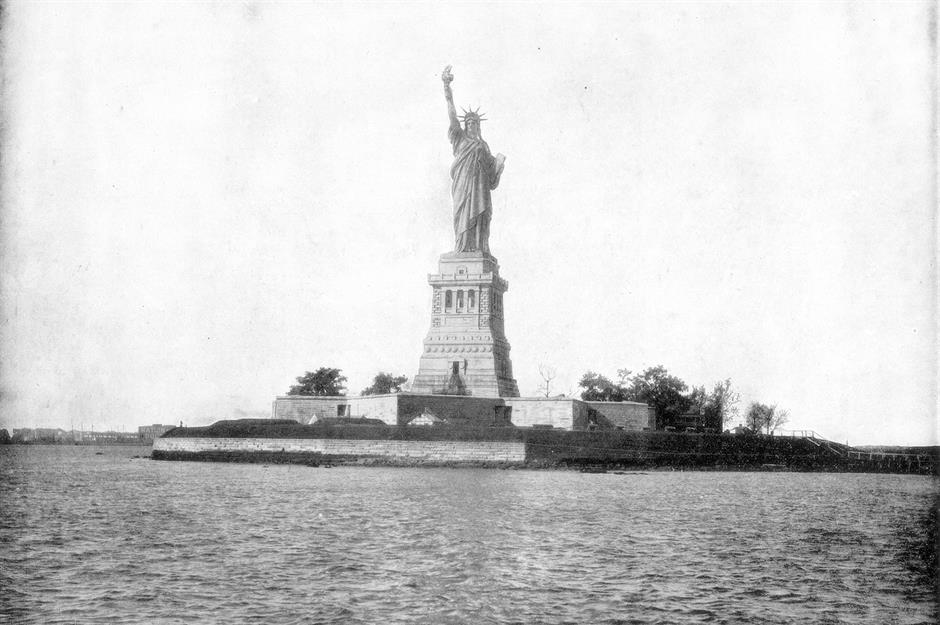
The statue came under the control of the US Department of War at the turn of the century, before ultimately being transferred to the stewardship of the National Park Service in 1937.
The NPS designation meant there was a renewed interest in making the island enticing to visitors, and landscape architect Norman T. Newton was tasked with creating a plan.
New plans are afoot
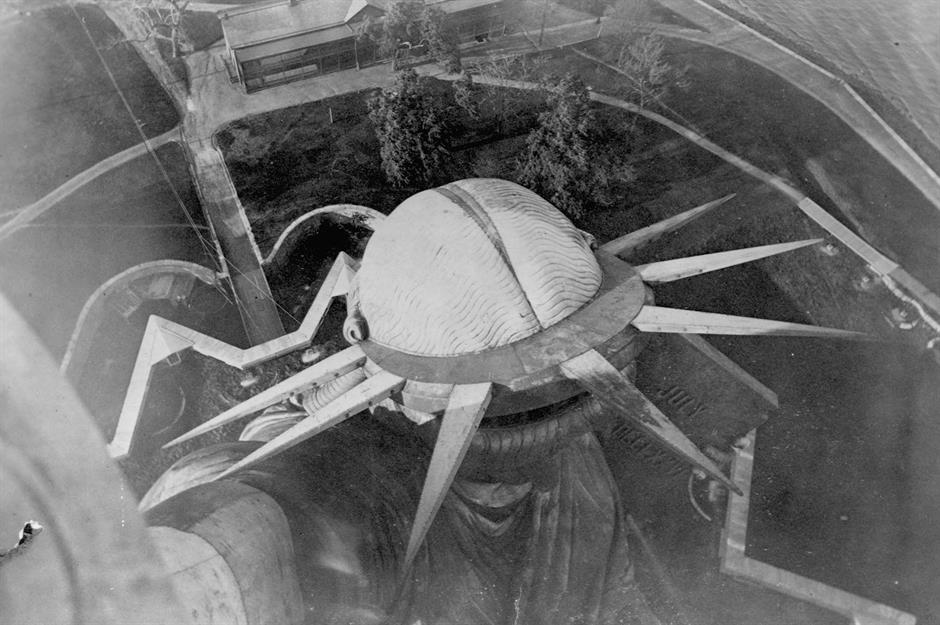
Newton's plans included the demolition of old army buildings on the island and the construction of winding boulevards and wide-open lawns, all intended to attract more tourists. Here, the monument is pictured from above, offering a fabulous view of her crown.
World War II ends
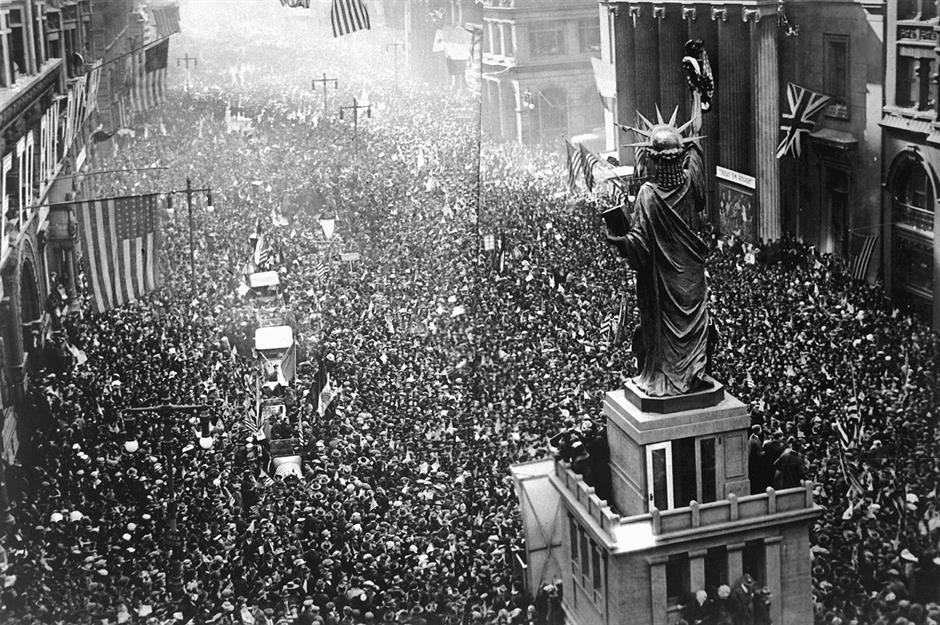
During World War II, from 1939 to 1945, Newton's plan was paused. However, once the conflict was over, America's sights were once again set on improving the monument, and some $110,000 was injected into the project. This photograph shows Armistice Day celebrations on Manhattan's Broad Street, next to an impressive replica of the statue.
The statue celebrates a big birthday
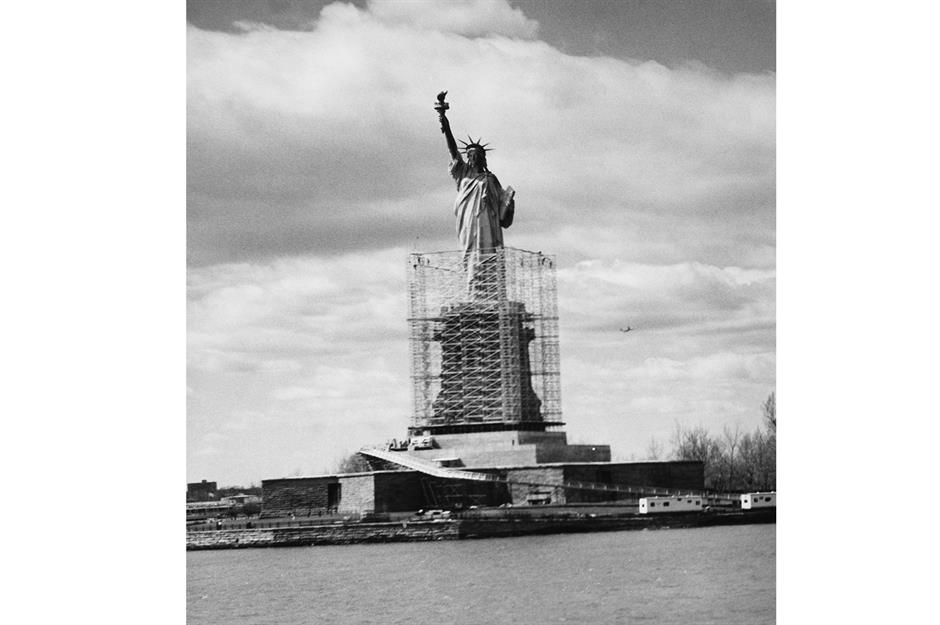
By the 1980s, the Statue of Liberty was gearing up for her centennial year, and President Ronald Reagan ensured there were funds enough to make the monument sparkle for her big birthday.
Extensive restoration work got underway, including repairing holes and replacing rusting parts – she's pictured here in scaffolding while the renovations were ongoing.
Lady Liberty's original torch is replaced
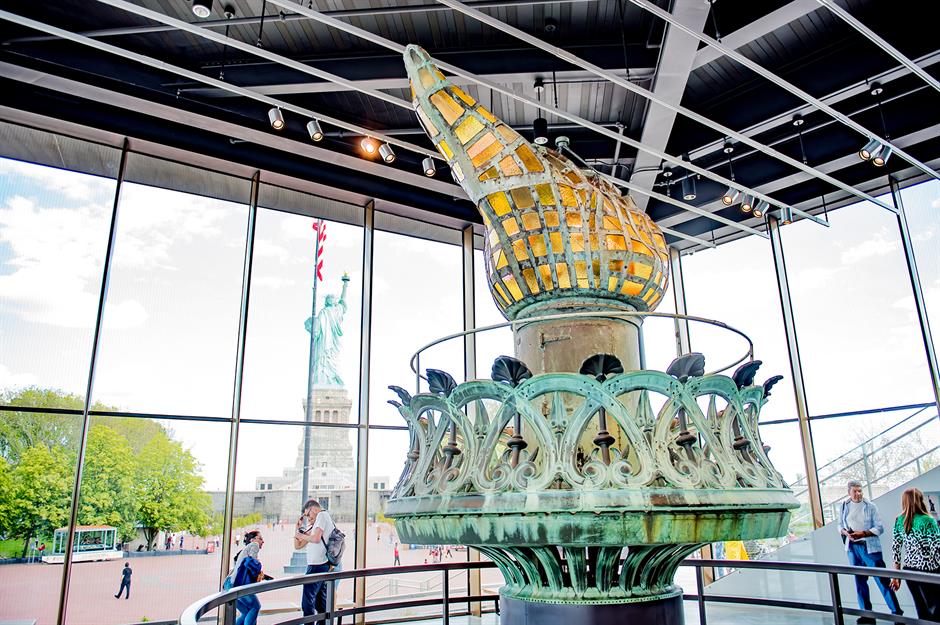
One major change during the statue's renovation was the replacement of Bartholdi's original torch. This element of the statue had degraded over the years and, during the restorations, it was decided that the original torch could not be saved.
A replica that closely matched Bartholdi's initial design was erected, and you can now see the original giant torch at the Statue of Liberty Museum's Inspiration Gallery (pictured).
Lady Liberty stars on the big screen
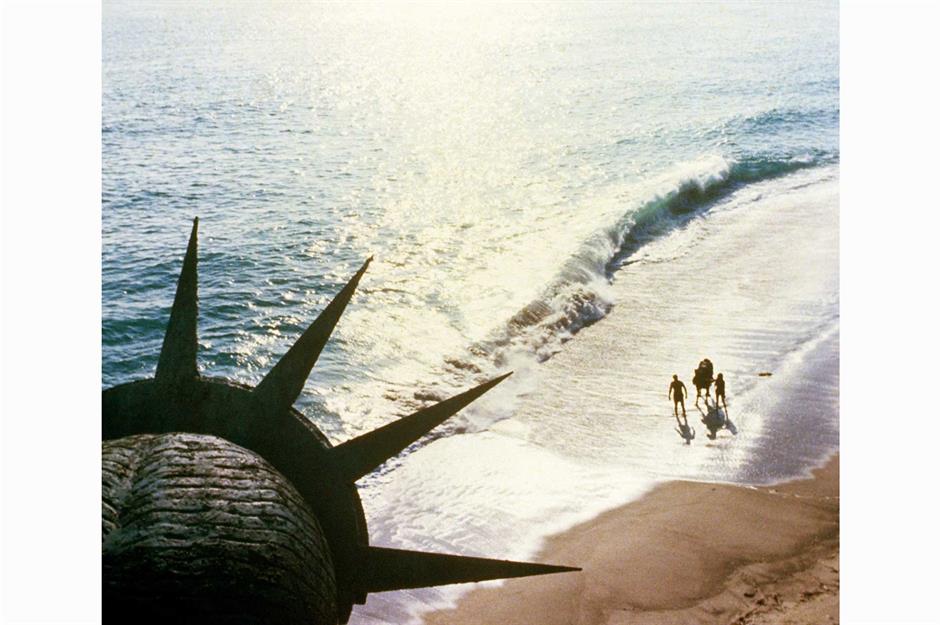
Given her celebrity status, it's not surprising that Lady Liberty has made a cameo in many a movie. You'll catch notable glimpses of her in films including Planet of the Apes, where her remnants are seen protruding from a beach in the final scenes, and apocalyptic The Day After Tomorrow, for which her ice-covered arm and crown made the dramatic DVD cover.
The Statue of Liberty today

Today, more than three million visitors typically make their way to the Statue of Liberty each year, exploring the Statue of Liberty Museum and taking in the views from the pedestal observation deck.
The monument remains deeply woven into popular culture and current events too, serving as a backdrop for everything from Fourth of July drone shows to political protests.
Now discover the secrets of the world's most famous buildings...
Comments
Be the first to comment
Do you want to comment on this article? You need to be signed in for this feature